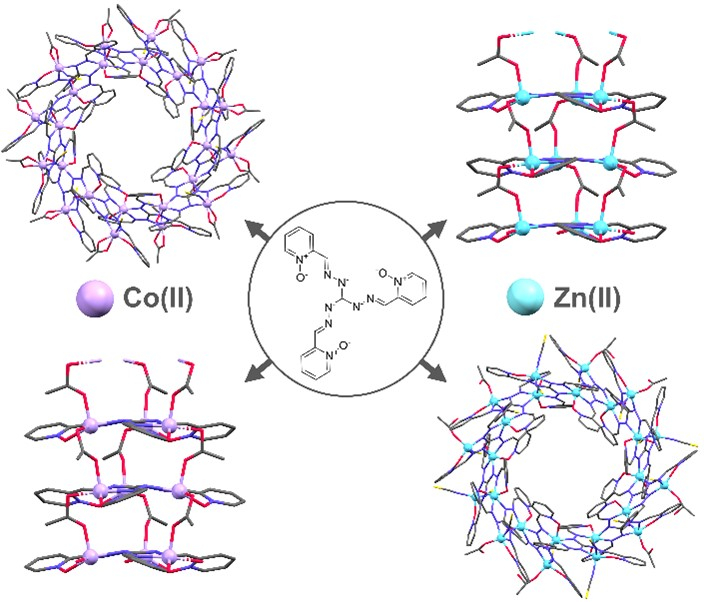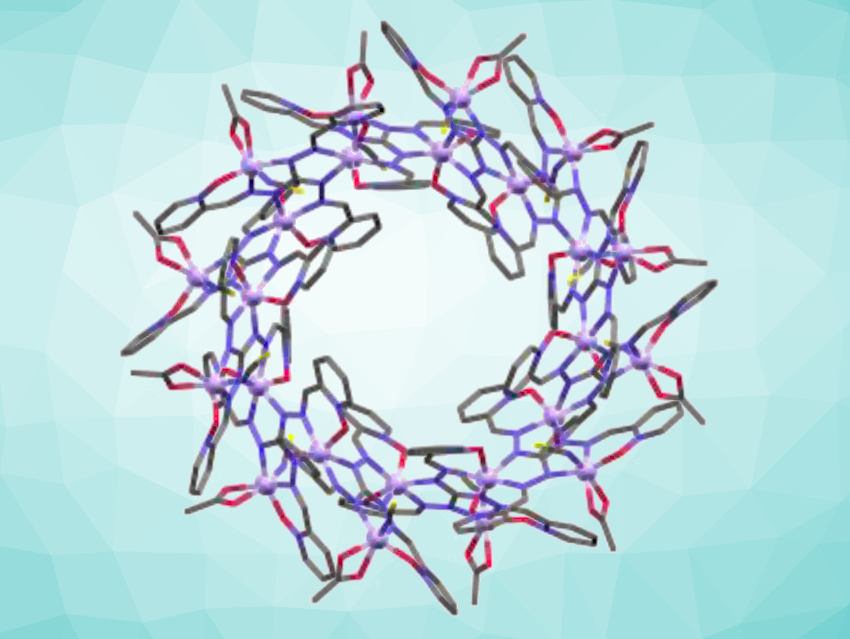Triaminoguanidine-based ligands can be used in supramolecular chemistry as triangular building blocks, e.g., for the rational design of polyhedral cages. If tris-(2-pyridinylene-N-oxide)triaminoguanidine is reacted with zinc(II) ions, metallocycles are obtained. They have a cavity with a diameter of 10 Å and can be used for the encapsulation of guest molecules. However, zinc(II) compounds are limited in application because of their electronic configuration, which prevents most catalytic applications and interesting magnetic properties.
Iris M. Oppel, RWTH Aachen University, Germany, and colleagues have synthesized supramolecular triaminoguanidine-based cobalt(II) complexes inspired by their zinc(II) analogs (examples pictured below). The team prepared the supramolecular metallocycle [Co6(OOCMe)3(NCS)3L3]4 using a salt of the tris-(2-pyridinylene-N-oxide)triaminoguanidine ligand L2–, Co(NO3)2·6H2O, NaSCN, acetic acid, and triethylamine in N,N-dimethylformamide. The cobalt complexes show very similar structures to the known corresponding zinc(II) metallocycles.

Magnetic measurements showed predominantly antiferromagnetic exchange interaction between the cobalt(II) centers linked by the triaminoguanidine backbone. By doping zinc(II)-based metallocycles with paramagnetic cobalt(II) ions, the magnetic properties of the metallocycles could potentially be tuned.
- Designing Supramolecular Triaminoguanidine‐Based Cobalt(II) Complexes Inspired by Their Zinc(II) Analogs,
Lisa Sturm, Marcus Becker, Jan van Leusen, Iris M. Oppel,
Eur. J. Inorg. Chem. 2022.
https://doi.org/10.1002/ejic.202101023




